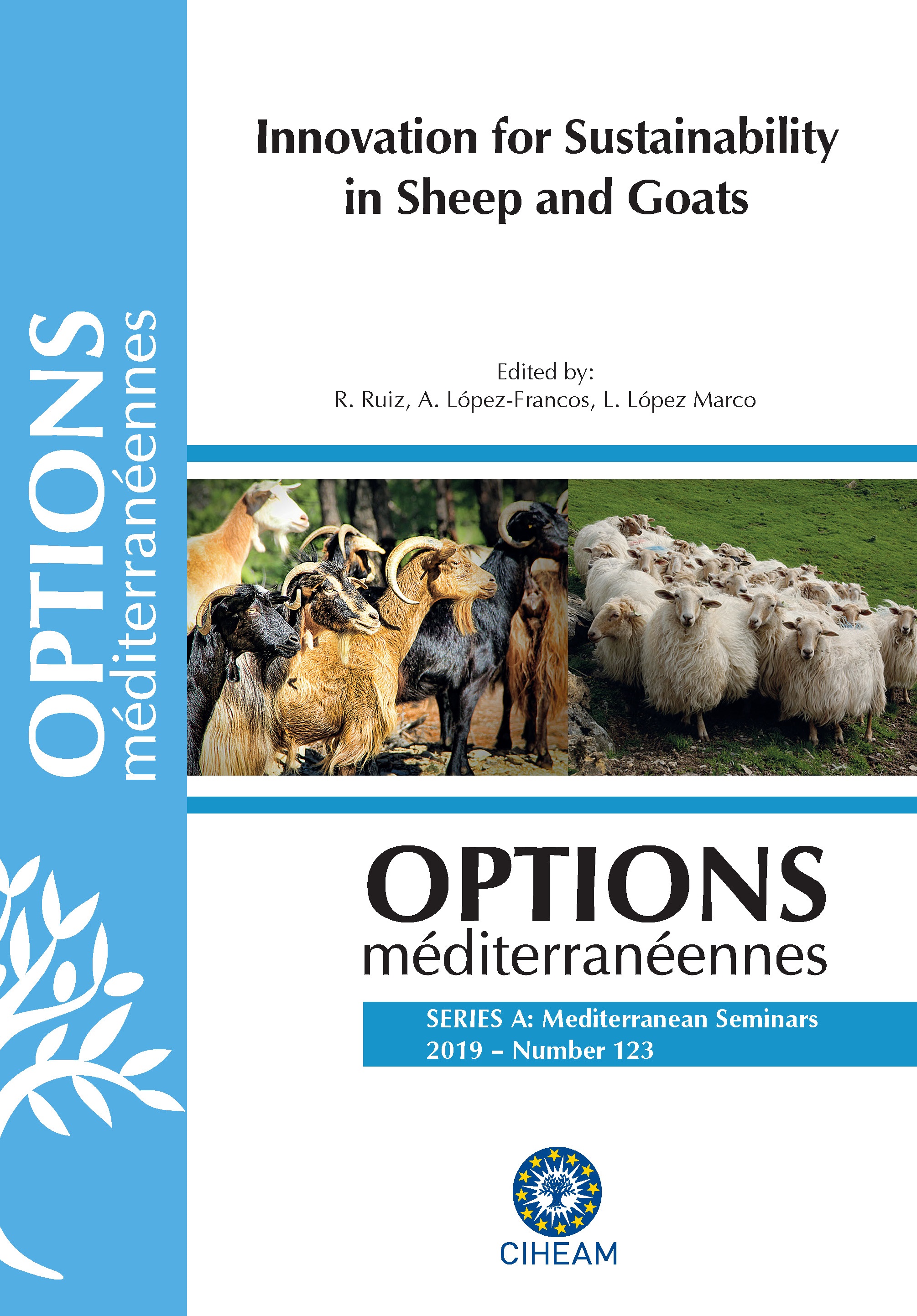| Article précédent | p. 73-82 | Article suivant |
Nutritional approaches to improve the fatty acid profile of milk fat in sheep and goats
Sheep and goat milk are sources of bioactive compounds with health-promoting properties. The demand for sheep and goat milk has grown worldwide over the years, because of both the increased request for cheese and other traditional dairy products, and the success of sheep and goat milk as component of infant formulas, drinking milk and nutraceutical product. Animal feeding is one of the main factors affecting the quality of fat in sheep and goat milk and, therefore, in the derived dairy products. In particular, nutrition can readily alter milk fat concentration and fatty acid (FA) profile. This review compared the effects of sheep and goats feeding strategies on milk fat composition, with focus on FA with potential healthy properties, such as conjugated linoleic acid (CLA) and polyunsaturated fatty acids (PUFA) of the omega3 family. The nutritional strategies to design the FA profile of sheep and goat dairy products based on grazing and use of vegetable oils and the different nutritional responses of the two species are reviewed and discussed.
Le lait des ovins et caprins est une source de composés bioactifs possédant des propriétés favorables à la santé. La demande de lait de brebis et de chèvres a augmenté à l’échelle mondiale au fil des années, en raison à la fois de la plus grande consommation de fromage et autres produits laitiers traditionnels, et du succès du lait ovin et caprin comme composante de formulations pour nouveaux-nés, de lait à boire et de produits nutraceutiques. L’alimentation animale est l’un des principaux facteurs qui influencent la qualité de la matière grasse du lait des ovins et caprins et, par conséquent, des produits laitiers dérivés. En particulier, la nutrition peut facilement altérer la concentration de matière grasse et le profil en acides gras (AC). Cette révision a comparé les effets des stratégies d’alimentation des ovins et caprins sur la composition de la matière grasse du lait, en se focalisant sur les AC ayant des propriétés potentielles de santé, tels que l’acide linoléique conjugué (CLA) et les acides gras poly-insaturés (PUFA) de la famille oméga3. Dans cet article sont examinées et discutées les stratégies nutritionnelles visant à moduler le profil en AC des produits laitiers des ovins et caprins en se basant sur le pâturage et l’utilisation d’huiles végétales, ainsi que les différentes réponses nutritionnelles de ces deux espèces.
- [ Afficher ]
- [ Télécharger ]
- [ Exporter la citation ]
Vous pouvez télécharger la citation au format :
- [ Imprimer ]
-
Mots-clés
ACIDE GRAS, ACIDE LINOLEIQUE, ANIMAL LAITIER, BREBIS, CHEVRE, LAIT, NUTRITIONCiter cet article
Nudda A., Cannas A., Pulina G. Nutritional approaches to improve the fatty acid profile of milk fat in sheep and goats. In : Ruiz R. (ed.), López-Francos A. (ed.), López Marco L. (ed.). Innovation for sustainability in sheep and goats. Zaragoza : CIHEAM, 2019. p. 73-82. (Options Méditerranéennes : Série A. Séminaires Méditerranéens; n. 123). 2. Joint Seminar of the Subnetworks on Nutrition and on Production Systems of the FAO-CIHEAM Network for Research and Development in Sheep and Goats, 2017/10/03-05, Vitoria-Gasteiz (Spain). http://om.ciheam.org/om/pdf/a123/00007862.pdf



